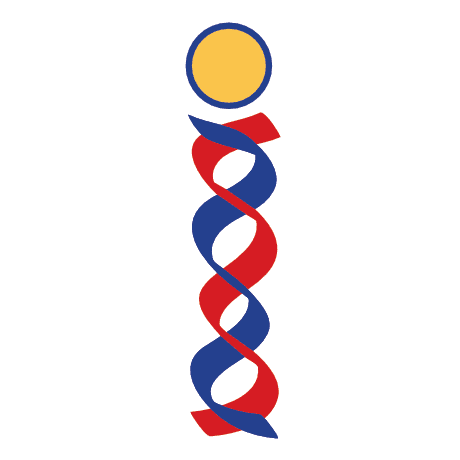- Water comprises 75% of the body, and most of the rest is collagen, the molecule of connective tissue. Connective tissue is continuous from head to toe, and from the nucleus of every cell outwards to the whole body. It changes forms, but includes arterial and venous walls, nerve linings, tendons, ligaments, fascia, cartilage and bone, and is formed from the same tissue in the embryo, the mesoderm. (Muscle is a contractile form of connective tissue.)
- The shape, stiffness and function of all forms of connective tissue (including the Extra- and Intra-Cellular Matrix) affect the function and health of tissues around them.
- Although we concentrate on muscle stiffness and tension, the redistribution of forces throughout the body occurs through other connective tissues before occurring in muscles.
- Connective tissue changes exert a primary influence in the protective function of symptoms, and follow osteopathy’s hierarchy – more important tissues will be protected at the expense of less important.
- Connective tissue, especially the ECM, is a self-regulatory living liquid crystal matrix.
- Connective tissue is a signaling system that can transmit signals even faster than the nervous system, like the instantaneous transmission of a radio signal throughout a crystal.
- Both the regulatory and signaling properties of connective tissue derive primarily from physics, especially quantum mechanics, rather than biochemistry.
- The body generates a symptom after it has already compensated as much as possible, so the symptom can be understood as the “least worst alternative”. We see this compensation partly as restriction in connective tissue, altered movement and posture, and the body’s protective mechanisms. Changes in behavior also usually show greater restriction or limitation.
- Protective alterations include muscle tension and connective tissue restriction from stress, trauma, habitual reactions, and restriction of energy flow, leading to inhibition of the physical expression of the being, especially emotionally, and in all forms of conditioned movement and behavior, including dietary choices. When the symptom is soft-tissue pain, the site of the pain is the last place we should be looking for its cause.
- Water in the tissues responds to electromagnetic stressors, including dehydration, with changes of shape, stiffness and function, brain activity and cognitive function, and the body’s ability to interact with and use Qi energy and information.
- The human body (as an open-system in constant energy and information exchange with the whole of its environment), will inevitably experience constant change in the makeup and balance of its energy and vitality. This also causes restrictions in the connective tissue.
- The body heals any symptom when it doesn’t need itany more, when the earlier links in the chain have been resolved. Consequently, as healing dispels the need for compensation, so any release in connective tissue leads to a more relaxed posture, greater energy flow, and greater freedom of movement and expression.
“Tensegrity (or tensional integrity) is an architectural term describing how tension and compression can be balanced and distributed throughout a structure. Load or stress one portion of the structure and the whole structure will give a little to accommodate. Viewing the human body as a tensegrity structure rather than as a compressive structure such as a stack of bricks (or bones) helps to explain why an injury in one region can cause pain elsewhere.
“Tensegrities allow for flexibility and a resilience to the dynamic stress our bodies deal with throughout the day to run or twist or pull or even walk. But that amazing ability to instantaneously distribute forces throughout the structure also means components can be strained (or injured) far from the site where the force (or problem) originated. For treatment of pain, this makes assessing the whole body, rather than just the painful region, pivotal for treatment to work.”
For more information on tensegrity’s application in the musculoskeletal system see Ed Stiles D.O. [http://www.omtsos.com/] or Stephen Levin M.D. [http://www.biotensegrity.com/]

Further Reading:
Alfred Pishinger – The Extracellular Matrix & Ground Regulation, North Atlantic Books, 2007
James Oschman – Energy Medicine in Therapeutics and Human Performance, Butterworth-Heineman, 2003
William Sutherland – The Cranial Bowl, Free Press Company, 1939
John E. Upledger & Jon D. Vredevoogd – Craniosacral Therapy, Eastland Press, 1983
Rollin E. Becker – Life in Motion, Stillness Press, 1997
Mae-Wan Ho – The Rainbow and the Worm: The Physics of Organisms, World Scientific Publishing, 2008
Mae-Wan Ho (ed) – Energy and Information Transfer in Biological Systems, World Scientific Publishing, 2003
Mae-Wan Ho – Living Rainbow H2O, World Scientific Publishing, 2012
Thomas Myers – Anatomy Trains: Myofascial Meridians for Manual & Movement Therapists, Churchill Livingstone, 2008
Thomas Myers – Fascial Release for Structural Balance, North Atlantic Books, 2010
Erich Blechschmidt – The Ontogenetic Basis of Human Anatomy, North Atlantic Books, 2004
R. Douglas Fields – The Other Brain: From Dementia to Schizophrenia, Simon and Schuster, 2009
© Malcolm Fraser 2022. All rights reserved.




